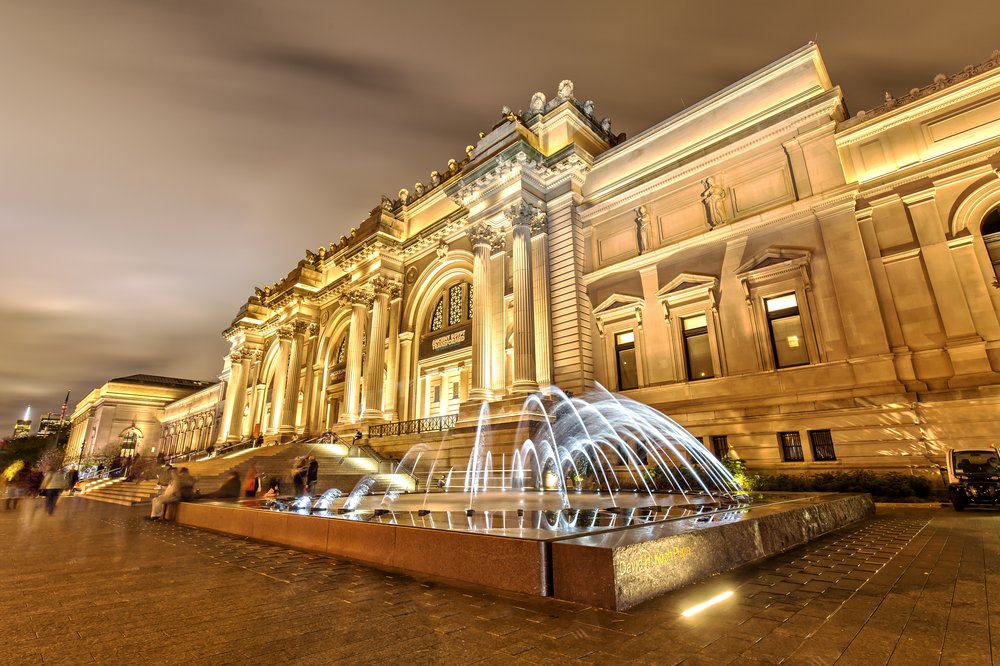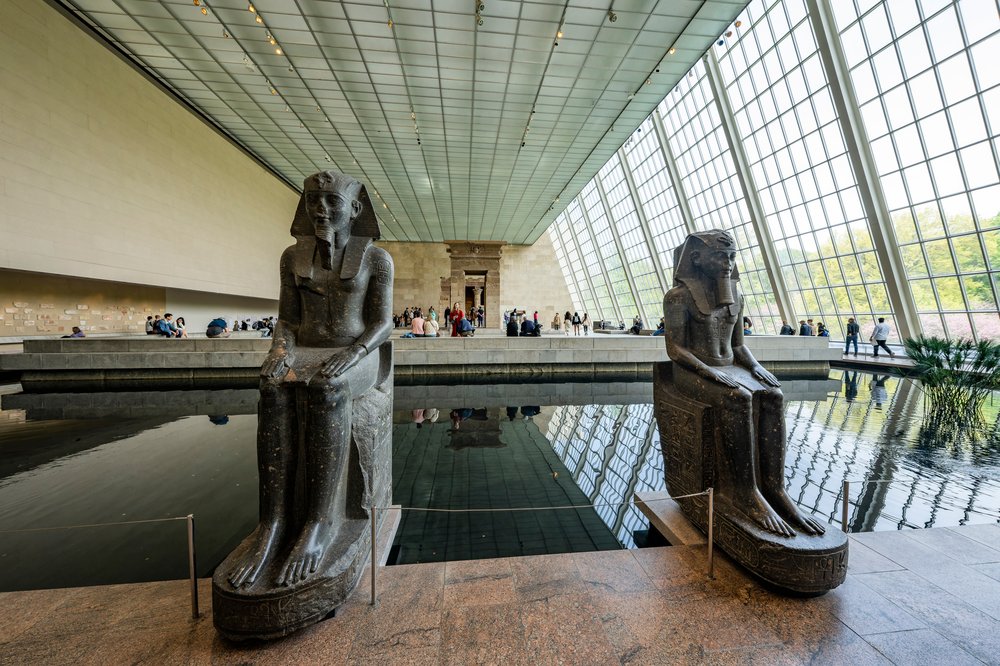The Met says it has a plan to root out looted art from its collection
May 30, 2023, 5 a.m.
A new initiative by one of the world’s largest museums is a response to public pressure.

The Metropolitan Museum of Art will expand its efforts to identify looted items in its vast collection and prevent the acquisition of antiquities that have been obtained abroad illegally, the museum’s director announced.
The initiative follows pressure from law enforcement in New York, the art community and the international press, which have shined a spotlight on the museum’s failure to police its collection for looted works.
Max Hollein, the director of the Met, told Gothamist the museum plans to hire four people tasked with researching the provenance of artworks, including a new manager of provenance research, who would help the institution respond to evidence.
“We want to make sure that we can act on it and react on it swiftly and diligently,” said Hollein, who first announced the initiative in an article titled “Reflections on The Met Collection and Cultural Property,” which was posted on the museum’s website.
The documentation that we have been supplied with by the sellers was fraudulent. In some cases we need to improve our processes.
Max Hollein, director of the Metropolitan Museum of Art
“As a pre-eminent voice in the global art community,” Hollein wrote, “it is incumbent upon The Met to engage more intensively and proactively in examining certain areas of our collection and to increase the resources we dedicate to this ongoing crucial work.”
The museum’s collection, which at 1.5 million works is one of the largest in the world, has faced intense scrutiny from law enforcement, the art community and journalists.
Since 2022, the Manhattan district attorney’s office said it had seized more than 60 works from the museum that it claims were stolen. In March, the International Consortium of Investigative Journalists reported that more than 1,000 artifacts in the Met's collection were linked to alleged art looting and trafficking figures.
At least 77 items from South Asia in the museum’s collection were linked to convicted art trafficker Subhash Kapoor, according to a joint investigation published in March by the Indian Express, the London-based nonprofit Finance Uncovered, and the ICIJ.

These include Hindu sculptures dating back to the 6th century BCE. The findings prompted the museum to return 16 works to India last month, including a sculpture known as the Celestial Dancer. Reporting on the new steps announced by Hollein, the ICIJ wrote, “The move appears to be a rare admission by North America’s largest museum that its endeavors to keep its collection clean have fallen short.”
In 2019, the museum announced that it had returned a spectacular gold coffin to Egypt after being notified that it had been looted in 2011. The $4 million Coffin of Nedjemankh had been the centerpiece of an exhibition that drew nearly 450,000 visitors, according to the museum.
“The documentation that we have been supplied with by the sellers was fraudulent,” said Hollein in the interview. “In some cases we need to improve our processes.”
Responding to pressure
Manhattan District Attorney Alvin Bragg said in a statement last week that Manhattan cannot be a “safe harbor” for stolen cultural artifacts.
“Far too many antiquities have made their way into museums, auction houses and private art collections through illegal looting and trafficking networks,” Bragg said. “We encourage all institutions to proactively identify these stolen pieces so they can be returned to their countries of origin where they rightfully belong.”
Hollein said he sees “the activity and the efforts from the Manhattan DA's office as entirely positive,” but that the additional research and museum safeguards would likely slow down and even reduce acquisitions in certain areas.
In a May 8 letter to staff, Hollein wrote, “this work is important and it is a priority, but it is also highly complex and will take time.”
Hollein acknowledged that the museum was moving forward due to “public scrutiny and media attention.”
You could say the Met is launching a new initiative, or you could say that the Met is scrambling to catch up to what many other major American museums have already realized.
Erin Thompson, professor of art crime at John Jay College
“That necessitates us to be a really active participant in this overall conversation,” he said.
But he said the landscape had also changed as individuals and institutions abroad increasingly presented evidence of looting.
“In the last, I would really say five to 10 years, a completely new level of both documentation as well as evidence came to the fore that allows us to revisit with that information some of the objects that might come into question," he said.
‘GUN TO THEIR HEAD’
The changes announced by the Met have drawn guarded responses from experts in looted art, with some saying the museum should’ve acted far sooner.
Erin Thompson, a professor of art crime at John Jay College, said she was “cautiously optimistic.”
“You could say the Met is launching a new initiative, or you could say that the Met is scrambling to catch up to what many other major American museums have already realized,” she said, noting that provenance researchers are already employed by a number of well-regarded museums. These include the Philadelphia Museum of Art, the Museum of Modern Art, Denver Museum of Art, The Getty, Smithsonian, Yale University Art Gallery and the Virginia Museum of Fine Arts.
Christopher A. Marinello, the CEO and founder of Art Recovery International, was caustic when it came to the Met’s record of dealing with stolen art and antiquities.
“They are immensely cooperative and forthcoming with documentation and provenance and lead the world's museums in their willingness to negotiate and resolve disputes amicably WHEN THEY HAVE A GUN TO THEIR HEAD. (i.e. a subpoena from the attorney general),” he wrote in an email.
“The Met has always been aware that some of its most prized, high-net-worth donors and trustees have donated objects with gaps in provenance which raised ethical red flags,” he said. “Only now have they felt compelled to create a new department to deal with the number of complaints and seizures that are tainting this once revered institution.”
Over the years, Thompson has used her Twitter feed to nudge or even shame the Met.
Remember in 2021 when I was politely reminding the Metropolitan Museum that the upper half of a stolen shalabhanjika/yakshi/nature goddess sculpture they had in storage belonged back with its lower half in a monastery in Kathmandu? Guess what happened today?!? pic.twitter.com/GZYRXBCBbz
— Erin L. Thompson (@artcrimeprof) March 17, 2023
She argued that institutions like it have historically downplayed or ignored red flags in part because of the demographics of the museum world, in which employees, board members and visitors are overwhelmingly white. But she said ethical norms are changing, including with a younger generation of employees at the Met that she claims speak to her anonymously and who are bringing pressure to bear at the museum.
“I think there's been just growing public awareness about the after-effects of colonialism,” she said. “People are getting a little more cynical about museums, and I think that's a good thing.”
New NY law requires museums to identify European art stolen by Nazis Man to Met: "That's My Cézanne!"